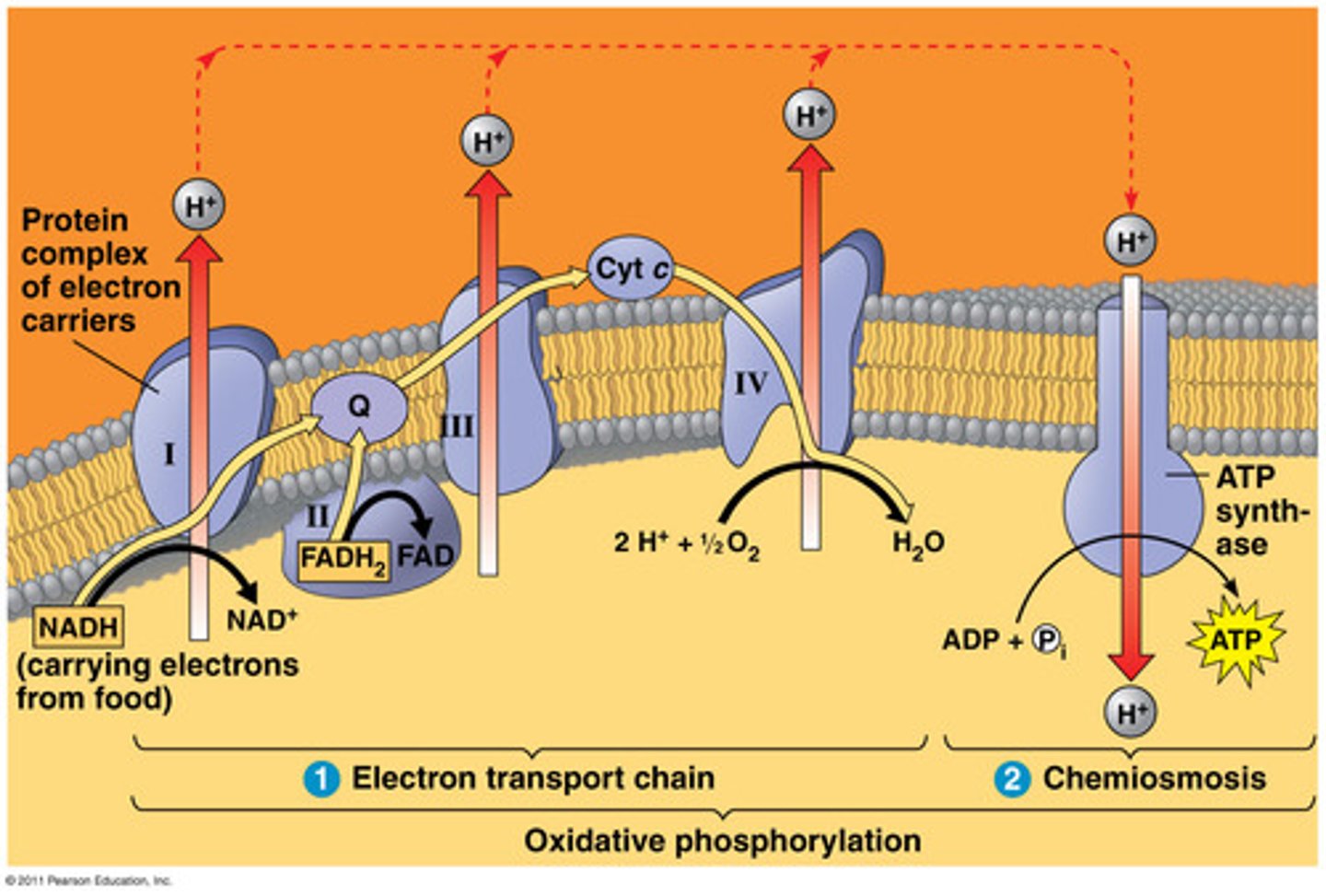Cellular Respiration
1/9
There's no tags or description
Looks like no tags are added yet.
Name | Mastery | Learn | Test | Matching | Spaced |
|---|
No study sessions yet.
10 Terms
Mitochondria
site of cellular respiration; provides energy for the cell
- double membrane, inner membrane highly folded

3 steps of aerobic respiration
1. Glycolysis -> link reaction
2. Krebs Cycle
3. Electron Transport Chain
glycolysis
Location: Cytoplasm of the cell
Type of Process: Anaerobic (does not require oxygen)
Purpose: The first step in releasing energy from glucose.
In glycolysis, one molecule of glucose (6 carbon) is broken down into two molecules of pyruvic acid (3 carbon each). During this process:
Hydrogens are removed and join with NAD⁺ to form NADH.
2 ATP are used to start the process, and 4 ATP are produced, giving a net gain of 2 ATP.
The end products are two molecules of pyruvate (3C).
After glycolysis, the pyruvic acid molecules enter the mitochondrial matrix where they are oxidized. One carbon dioxide (CO₂) is removed from each pyruvic acid molecule, forming acetyl-CoA (2 carbon), which then enters the Krebs cycle.
Krebs cycle
Location: Mitochondrial matrix
Purpose: To further break down acetyl-CoA and produce energy carriers for the electron transport chain.
The acetyl-CoA (2 carbon) formed from pyruvic acid enters the Krebs cycle.
Acetyl-CoA combines with a 4-carbon compound (oxaloacetate) to form a 6-carbon molecule called citric acid.
Citric acid undergoes a series of reactions where two CO₂ are released (for each acetyl-coA, and the hydrogens are transferred to NAD⁺ and FAD, forming NADH and FADH₂.
1 ATP is produced directly in one turn of the cycle.
The cycle regenerates oxaloacetate (the 4-carbon compound) to continue the process.
For each acetyl-CoA, the products are:
3 NADH
1 FADH₂
1 ATP
2 CO₂
Since two acetyl-CoA are produced per glucose molecule, everything is doubled for one glucose molecule. The energy carriers (NADH and FADH₂) move on to the electron transport chain to produce more ATP.
cellular respiration equation
C6H12O6+6O2---> 6CO2+6H2O+ATP
electron transport chain
Location: Inner mitochondrial membrane
Process: NADH & FADH₂ donate electrons → electrons pass through protein complexes → energy pumps H⁺ into intermembrane space → proton gradient forms
ATP Production: H⁺ flows through ATP synthase → ADP + Pi → ATP (oxidative phosphorylation)
Final electron Acceptor: Oxygen (forms H₂O)
Purpose: Produces most ATP in cellular respiration

chemiosmosis (oxidative phosphorylation)
the process of converting ADP to ATP by using the proton gradient (made by the etc) to force protons through the turbine-like ATP synthase
fermentation
Occurs in the cytoplasm when oxygen is unavailable (anaerobic).
Regenerates NAD⁺ to allow glycolysis to continue.
No additional ATP produced beyond glycolysis (net 2 ATP).
Two types: Lactic acid fermentation (in muscle cells & some bacteria) → Pyruvate → Lactic acid. Alcohol fermentation (in yeast & some bacteria) → Pyruvate → Ethanol + CO₂.
mtDNA
Mitochondrial DNA. Evolve rapidly. Maternally inherited only so trace the maternal line of inheritance through time
- provides link to endosymbiosis theory
Link reaction/pyruvate oxidation
each pyruvate 3C is oxidized to form acetyl-CoA, CO2 released, NAD+ is reduced to form NADH, coenzyme helps convert to acetyl-CoA